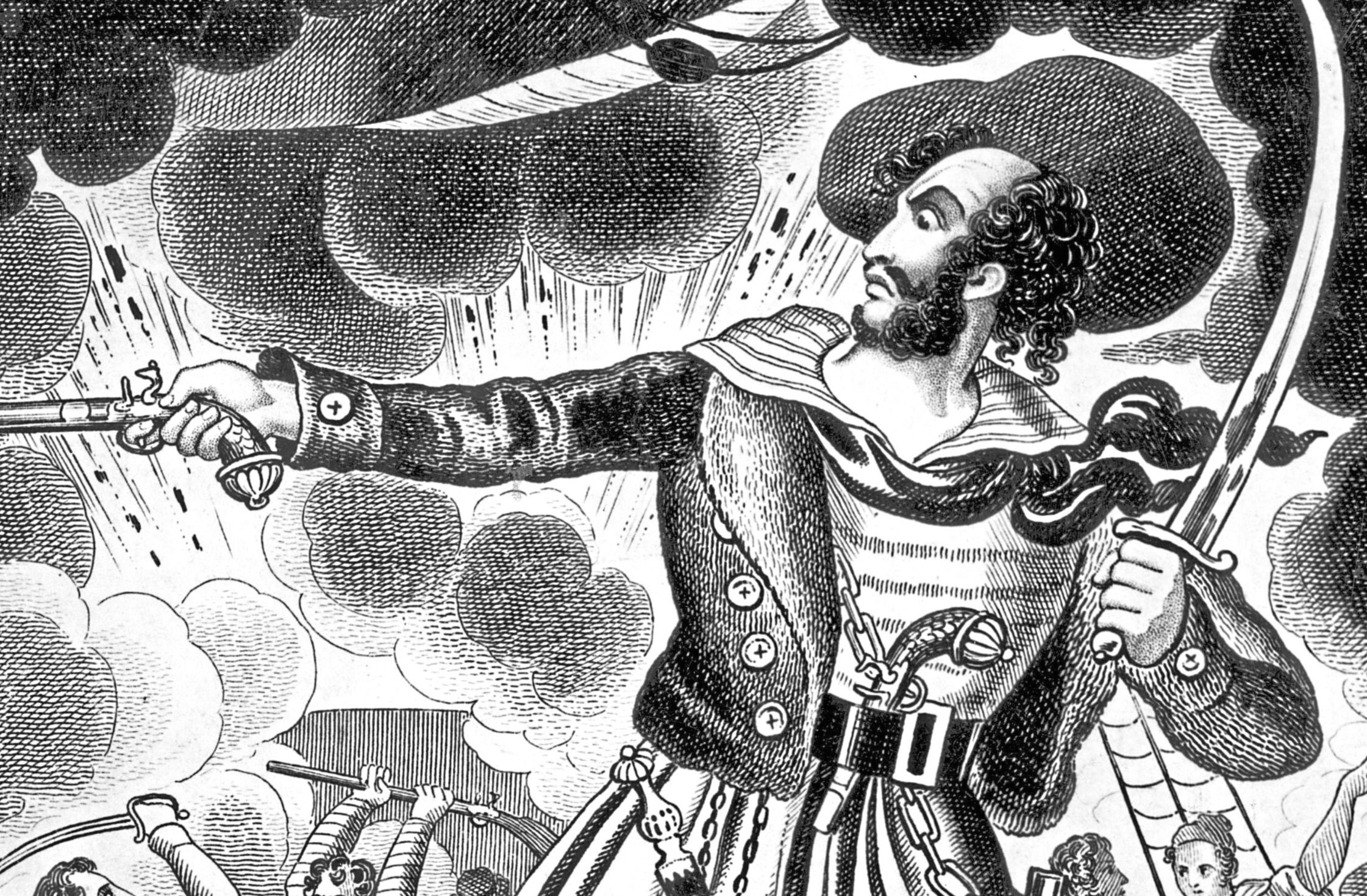
IF the extent of your pirate knowledge covers only Johnny Depp’s Caribbean-based movies and common myths, help is at hand.
A new book tells the true story of these brigands of the high seas, with plenty mention of rum, debauchery, hidden gold and surprisingly few parrots and eyepatches.
Author Helen Hollick is so fascinated by these men – and women – that she decided to write her own pirate book.
She wanted all the adventure and thrills she’s enjoyed in so many books and films, but she also wanted a bit more accuracy.
Now her latest work, Pirates: Truth And Tales, sets out to show us the real pirates and their often harsh, short, brutal lives.
“The majority of fiction about pirates’ lives is not accurate,” says Devon-based writer Helen, who first wrote as a teenager and whose Sea Witch Voyages adventures were inspired by the Golden Age of Piracy.
“Do adults read pirate-based fiction for the facts? The simple answer is no. But my hero pirate captain was to be a sexy charmer and adult scenes were to be included, although tastefully, I might add.
“As I could not find the book I wanted to read, I decided to give up looking and write my own.
“I wrote solidly for three months, which included Christmas, although I did stop for Christmas Day. I put my heart, soul and life into that story. My (now ex-) agent did not like it.
“She insisted adults would not be interested in pirates. I refused to rewrite it for teenage boys, and in true pirate style went my own way.”
Her latest book on her favourite subject is more factual. It’s full of interesting facts. For instance, not many of us know that when a man became a pirate, he went “On the account” or “On the sweet trade”.
And it probably never occurred to many of those young lads who were enthralled for centuries by tales of pirates, that young lads their age helped crew such vessels.
“Boys of around 12 years old were common aboard ships, be they merchant, navy or pirate,” Helen explains. “Boys were useful as cabin boys or ‘powder monkeys’ – quick and agile young lads who carried the gunpowder from the magazine to the gunners.
“At least three boys sailed with William Kidd aboard the Adventure Galley. They were arrested with Captain Kidd in Boston and, during his London trial, it was proven that the boys were merely following orders as servants.”
Kidd, in fact, features in one of the more incredible stories from Helen’s fascinating book.
“William Kidd was born in Dundee in January 1645, according to his testimony at his trial for piracy in 1694 or 1695,” says Helen. “His father, John Kyd, had been lost at sea, although there have been some claims that he was a minister of the church.
“It seems William became a sailor well before his privateering days, and that he took up residence in the young city of New York.
“In 1689 he was a member of a crew that mutinied, threw out the captain and sailed for Nevis, a small Caribbean island that is part of the Leeward Islands.
“Kidd became captain and the ship was renamed Blessed William, presumably for William of Orange, not William Kidd.
“Governor Bellmont of New York, Massachusetts and New Hampshire commissioned Kidd to go pirate hunting, seeking out the rogues of those early years of piracy in the Caribbean, along with any French ships.
“Kidd managed to find sponsorship from the Earl of Orford, the Baron of Romney, the Duke of Shrewsbury and Sir John Somers, all notable and powerful Englishmen.
“He was given a letter of marque, signed by King William III, the deal being that any prize was to be distributed with 10% for the king and the rest divided between the crew and the sponsors.
“When a Dutch ship hove into view and Kidd refused to attack it because King William III was Dutch, an argument broke out.
“Kidd killed one of his own crew, possibly by accident. He snatched up an iron basket and threw it at the man, fracturing his skull. He died that same day.”
Eventually, having failed to control his crew who plundered and ransacked against his orders, Kidd found himself charged with murder and facing a death sentence.
“Most of the crew, now opposed to Kidd, deserted,” says Helen, “and he returned to the Caribbean with only 13 men, where he soon discovered that he was a wanted man.
“He abandoned his ship and completed his journey to New York as a passenger aboard a sloop, apparently burying some plunder with the intention of coming back for it later.
“His backers, however, decided they would rather not be associated with piracy. Kidd was arrested when he reached Boston in July 1699.”
He was held for more than a year before being moved to England and brought before Parliament.
“He was nothing more than a scapegoat used by the Tories to discredit the Whigs,” says Helen, “but Kidd remained silent, confident his sponsors would come forward. They didn’t.
“Found guilty of murder – that iron bucket, remember – and five counts of piracy, he was sentenced to hang at Execution Dock, Wapping, on May 23 1701.
“He was pushed off a barrel, the drop was the usual short one that should have meant slow strangulation – but the rope broke. Another noose was slung around his neck.
“You can’t help but feel sorry for the poor man, who was probably innocent of the charges.
“If the rope broke again, it would be deemed an Act of God and he would be reprieved. The rope didn’t break.”
Being a pirate, it seems, regardless of whether you were a good one or a bad one and no matter how important your noble backers, could still be a lethal business.
Pirates: Truth And Tales, by Helen Hollick, is published by Amberley, price £9.99.


Enjoy the convenience of having The Sunday Post delivered as a digital ePaper straight to your smartphone, tablet or computer.
Subscribe for only £5.49 a month and enjoy all the benefits of the printed paper as a digital replica.
Subscribe